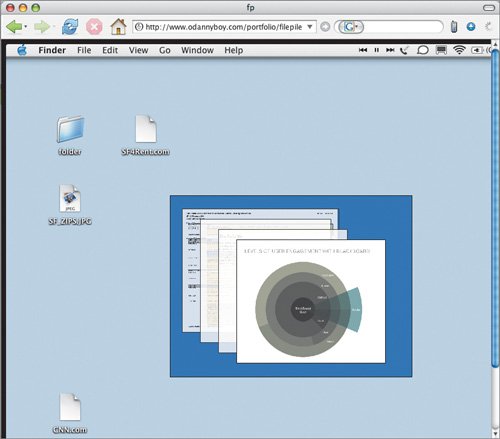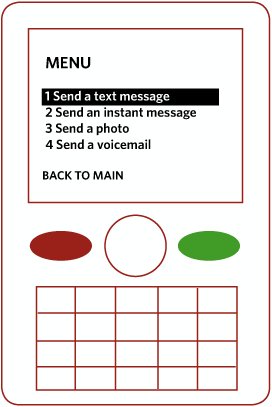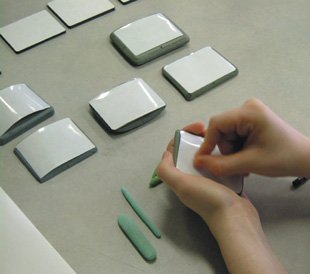Prototypes: Paper, Interactive, and Physical
| The final, essential step before a product or service is launched or, ideally, tested with users is the creation of a prototypeor, even better, multiple prototypes. Prototyping is where, finally, all the pieces of the design come together in a holistic unit. Indeed, many clients will have difficulty understanding a design until they see and use the prototype. Like all the other models and diagrams, it is a tool for communicating. Prototypes communicate the message "This is what it could be like." What form these prototypes take depends on both the designer's resources and the type of product or service that is being designed. A designer with the right resources can produce some high-fidelity prototypes that look and behave just like the final product or service would. Many retail chains build whole prototype stores! The purpose of all prototypes is to explore some characteristic of the final product or service. Perhaps one of the prototypes is efficient and bland; another is more whimsical and approachable. One is menu-driven; another uses more direct manipulation. One prototype uses sliders; another uses dials. Designers use prototypes to experiment and see what worksfor the designer, for clients, and for users. Frequently, one prototype is clearly the right approach, but just as often, after testing, it becomes clear that parts of each prototype work well, and the designer has to shape these into another prototype that is a hybrid of the best of the earlier prototypes. Most interaction designers work with three types of prototype: paper, digital, and physical. We'll discuss each in turn. Paper prototypes (Figure 5.14) are usually the fastest to create to demonstrate a working product or service. On paper, the designer creates a walkthrough of the product or system. Each piece of paper contains one moment of the design. That moment can be a Web page, a screen, or a part of a service. Viewers can step through the prototype by flipping through the pages in a particular order. Pages should be numbered, and instructions for moving between the pages should be provided ("If you press this button, go to page 9"). During testing (described in the next section), the subjects or the designer can write comments and notes directly on the prototype ("I really want this button to be here"). Another advantage of paper prototypes is that they are obviously not the final product, so viewers (and designers) subconsciously feel that they are more malleable. Figure 5.14. Paper prototypes like this one allow subjects to make comments directly on the prototype.
Digital prototypes (Figure 5.15) can take many forms, from static images to complex, 3D flythroughs of a service that are like Hollywood movies. Digital prototypes can have very limited functionalityusers can click through images in the same way that they turn pieces of paper in paper prototypesor they can be highly functional, with users being able to interact with the system and the system responding just as it would in the final product. For complex functionality, the richer and more complete a designer can make the digital prototype, the better. It is hard for prototype viewers to imagine how, for instance, a tool to draw boxes might work without being able to play with it, drawing boxes themselves. The danger with a high-fidelity prototype is that both users and clients may think it is the final product. Once a visual design is added, most will want to comment and focus on that instead of the functionality. Figure 5.15. Digital prototypes can be easily distributed over the Web. One advantage that digital prototypes have over other forms of prototypes is that they are easily distributed. Designers can put them on the Web or send them out on disks and have users play with them wherever they are. For software or Web sites, this means that users experience them on their own machines, in their own environments, as they would the final design. Physical prototypes (Figure 5.16) can be made for simple parts of a design (such as a dial or a button) or, for services, they can be complete physical environments that are like theatrical sets. As with other prototypes, the level of fidelity can vary greatly. Physical spaces can be created exactly so that users think they are really in the location, or images can be projected on a wall to simulate the location. A device can be made with the exact materials it will eventually be made of (plastic and metal, for instance), or it can be approximated with materials such as wood or clay. Figure 5.16. A physical prototype can be as small as a control or as large as whole rooms.
courtesy of Chun-Yi Chen Prototypes are the ultimate expression of the interaction designer's vision. Indeed, many designers feel that prototyping is the design activity, that everything before it is but a prelude, and that to design is to prototype. The importance of prototypes cannot be overestimated. |
EAN: 2147483647
Pages: 110

